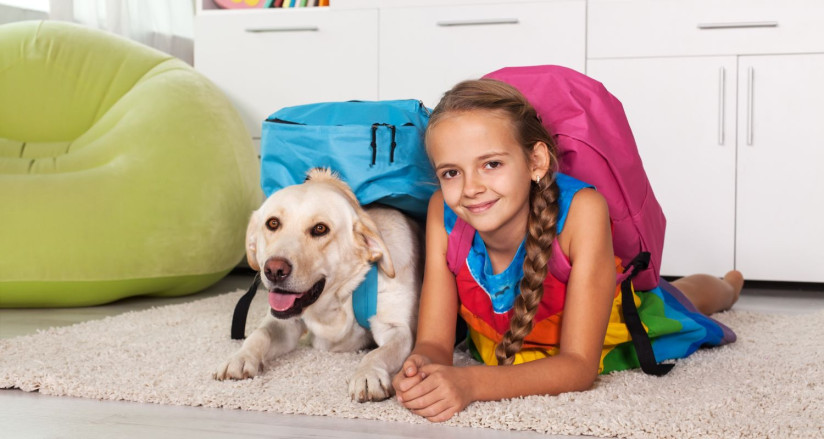Changing Routines can be Stressful for Your Dog. Help Them Adjust to the New School Year.
As summer winds down and school begins, everyone in the household – whether two- or four-legged – begins to adjust to new routines. Abrupt changes to day-to-day life can seriously affect our canine companions, however, who are creatures of habit. But with training and the right combination of food, shelter, and entertainment, everyone can quickly and smoothly adapt to the new normal.
Separation Anxiety
Dogs can become stressed when they transition from constant attention and companionship to being left alone for long stretches. Separation anxiety often manifests itself in destructive behaviors and endless barking. Luckily, there are simple solutions that can help your dog better adjust to the shifts in routine.
Start early: A couple of weeks before the kids go back to school, start separating your dog from the kids and the rest of the family for longer and longer periods. For example, if you frequently take your dog with you to the store, leave them at home instead.
Pay less attention to them: Dogs are often the center of attention when the whole family is around the house. A week before school begins, pay less attention to your dog for increasing amounts of time, continuing to extend the amount during the following days.
Boredom
Dogs tend to sleep during the day but expect entertainment when they get up. Recreation, however, can come in many forms, including some that require very little active attention from their human counterparts.
Scatter food: Dogs are natural foragers who love to look for food on the ground – they will literally spend hours doing so. Consider hiding some treats for your dog to locate while you are away, and be sure to always keep lots of fresh, clean water on hand so your dog stays well-hydrated.
Toys: Dogs love toys, but they can quickly become bored with or destroy them. If possible, buy high-quality, virtually indestructible toys – varieties that dispense treats tend to get a lot of mileage. Be sure to rotate the toy selection every few days to help your pup maintain their interest in what is on hand.
Shelter
Like humans, dogs crave a place where they can be at ease. Humans can help their pooch by providing a secure environment for them to retreat to when they feel like it.
Crates or Doghouses: Dogs are den-dwelling animals, making crates or doghouses great choices for a safe, secure place to relax. Proper crate training, however, is a must, and requires time. Start crate training well in advance of the transition back to school, as starting too late can add to you pup’s stress. Try and keep crate time to a maximum of 8-10 hours (4-6 hours for a puppy). If your family will be away longer, ask a friend to stop by and let your pooch out to toilet.
Laundry room: If you are concerned about accidents while your dog is inside all day, consider enclosing your canine companion in a smaller area with a vinyl or tile floor in case of mistakes. Leave a soft bed and toys in the space of choice as well for comfort and entertainment.
Unusual Behavior
Stressed dogs can sometimes exhibit unusual behaviors, such as jumping or even biting. It is not uncommon for children to come home from school and be greeted by the family dog in an unnecessarily rough manner – a byproduct of your pup’s pent-up energy and excitement after being alone most of the day and seeing familiar faces.
Teach the kids: It’s not just dogs that need training! Teach your children to avoid entering your dog’s area as soon as they get home, instead ignoring your pet for 5-10 minutes to allow them to settle down. Families with young children should have an adult present to reduce the chance of a problem. Your dog will start to relax as it learns the new routine.
Train your dog: Dogs can quickly learn which behaviors are acceptable and which are not. By Learning to Speak Dog the Bark Busters Way, humans can communicate more effectively with our canine companions.
